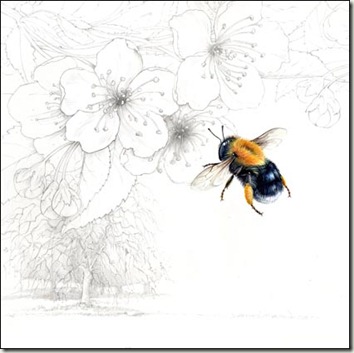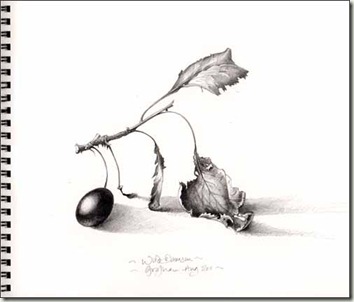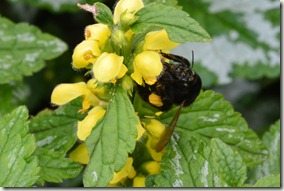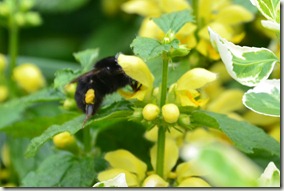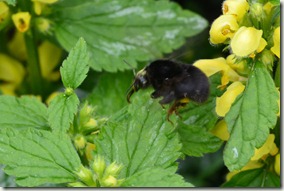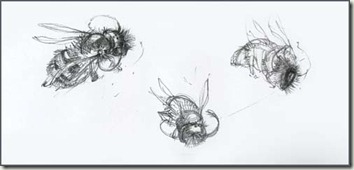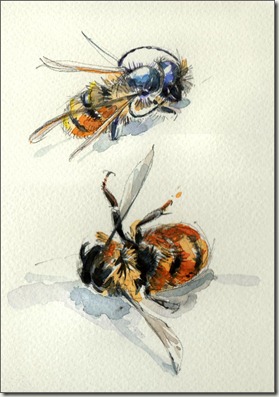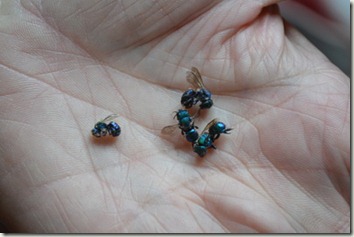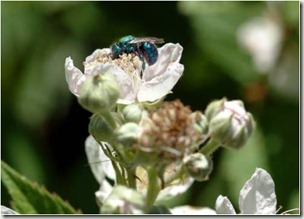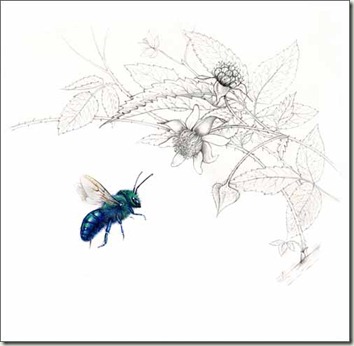I have nearly finished this painting and it has been fascinating to work on.
Although I had roughed it out I wasn’t really sure how it would turn out at all and I had been quite anxious about starting it. But as it developed, it took on a life of its own and that’s just how I like it.
The atmosphere and the “feel”of a piece is much more important to me than technical perfection, which is why I could never be a scientific illustrator. I sometimes think it must be like writing a novel or perhaps a short story. You become drawn in this other world that you are creating, sometimes more involved in this imaginary world, rather than in the one you are really living in.
My two bees became characters with a purpose and I have drawn them as well as I could. The bees this time are Osmia bicolour bees, both male and female. Today the male who will be sitting on a snail shell.
The first steps, ideas and roughs and research.
Some people ask me how long I need to do a painting and I guess I need at least a week of thinking and research time before I do anything. I really need to get to know my subject, understand how it lives, where it lives and a bit about its character.
This is sometimes the slowest and most agonising part of the work, because all you have is a piece of white paper and you have to start make all the decisions.
It could be anything, any size, any colour, any composition but you have to bring something to life, create something from the simple 2 dimensions of that piece of white paper.
You have to work a bit of magic. I sit and doodle I read and I make little thumbnails until I get something which seems to work. That’s what I usually send to a client and I have to tell them that the sketch is just a guide, because things will change and more importantly need to be able to change. It has to be my decision.
I would now rather make a painting that pleases me and have it rejected by a client than make something I am not happy with to please someone else.
So to recap, this was the thumbnail I sent to Carol and Peter.
The two Osmia bees, she is carrying a twig of some kind to cover her shell nest with. The male hanging about .. as male bees tend to, waiting for a mate.

This thumbnail was very small about A6 I guess, and done some time ago.
Looking at it again I re-draw and re-think it a bit. I am going to include something personal for Carol and Peter, just as I did for the B hypnorum commission.
It’s more meaningful for them and is an interesting addition to the painting. It’s bigger than any of my other bee paintings and it has two bees this time.
The image area is 12.5 x 14 .5 inches approx painted on a bigger size 19 x 22 inch size sheet of Fabriano Artistico HP 300.
It was originally going to be slightly larger still, but there is a “comfortable” size for these bees and I had to reduce it a bit. It depends what your aim is of course, but large bees can sometimes look a little unnerving!

This is now sketched out at the size I want to paint. I have changed the position of the male as I want him to look more at us.
The gaze and the engagement with the viewer is important. I have always felt that to walk out in the countryside is to be observed by many tiny creatures. I like that feeling and I am happy to slide away from strict scientific constraints to create an image I want. After all, this is my painting.
Starting to paint
My current set up is not ideal. We live in two rooms in total, a big bedsit I guess, so everything is rather cramped and the light is not good. But I have a lamp and a laptop stand to angle the board. It has to do for now and could be worse!

I am always nervous about the first layers of colour, worried about keeping the surface clean and worried that I will not be able to give the bee character and life.
But I need to get some colour down quickly, to get rid of some of the accusatory white paper!


I have put some pieces of paper round the image to try to keep the Fabriano clean.
I am not really a precise worker and do push the paint around quite a bit…splashes are frequent :).
I guess it is a bit of a cliché but I need to paint the eyes early on. I have to establish a rapport!

I build up with brush strokes that follow the shape of the hair or whatever it is I am painting. It seems to help to give it an underlying structure, even if it is obliterated later on.

I am jumping a couple of steps for fear this should be like “watching paint dry” .. on with the wings. I don’t put too much detail in.

and then a tidy up. It’s mostly watercolour with some white gouache for the fine hairs. The hair on a bee has different qualities on different parts of its body. Slightly silkier under the thorax and slightly bristlier on the top.

This is the end of day one. So far so clean!












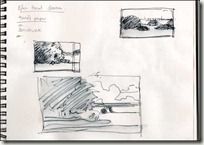
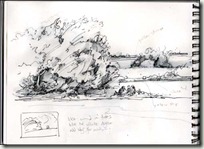


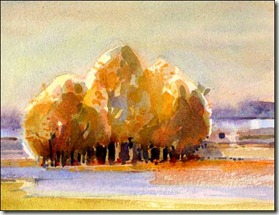






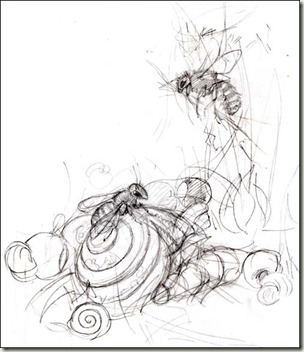

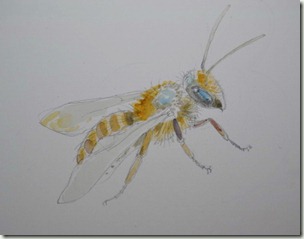
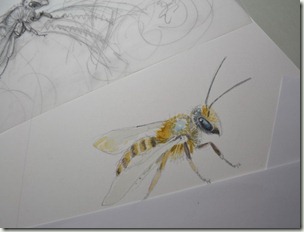
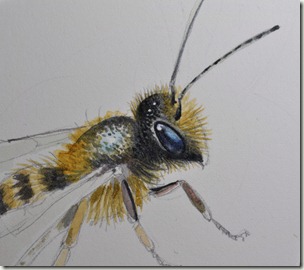
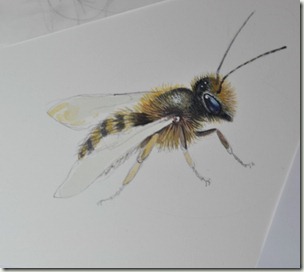
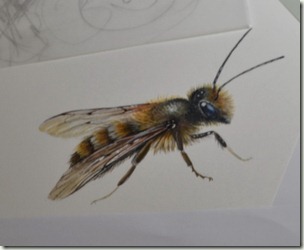
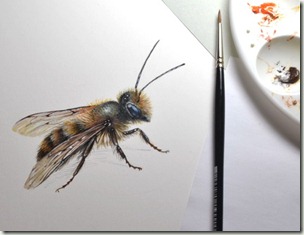
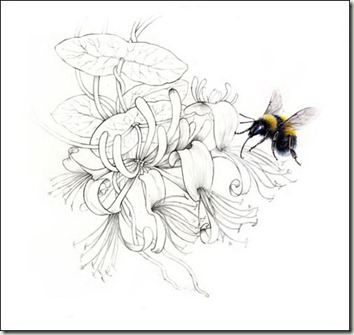
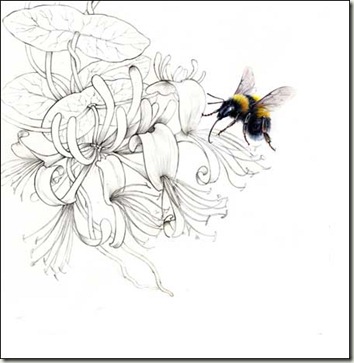
 I was also delighted to meet James Hammil from the fabulous
I was also delighted to meet James Hammil from the fabulous 
